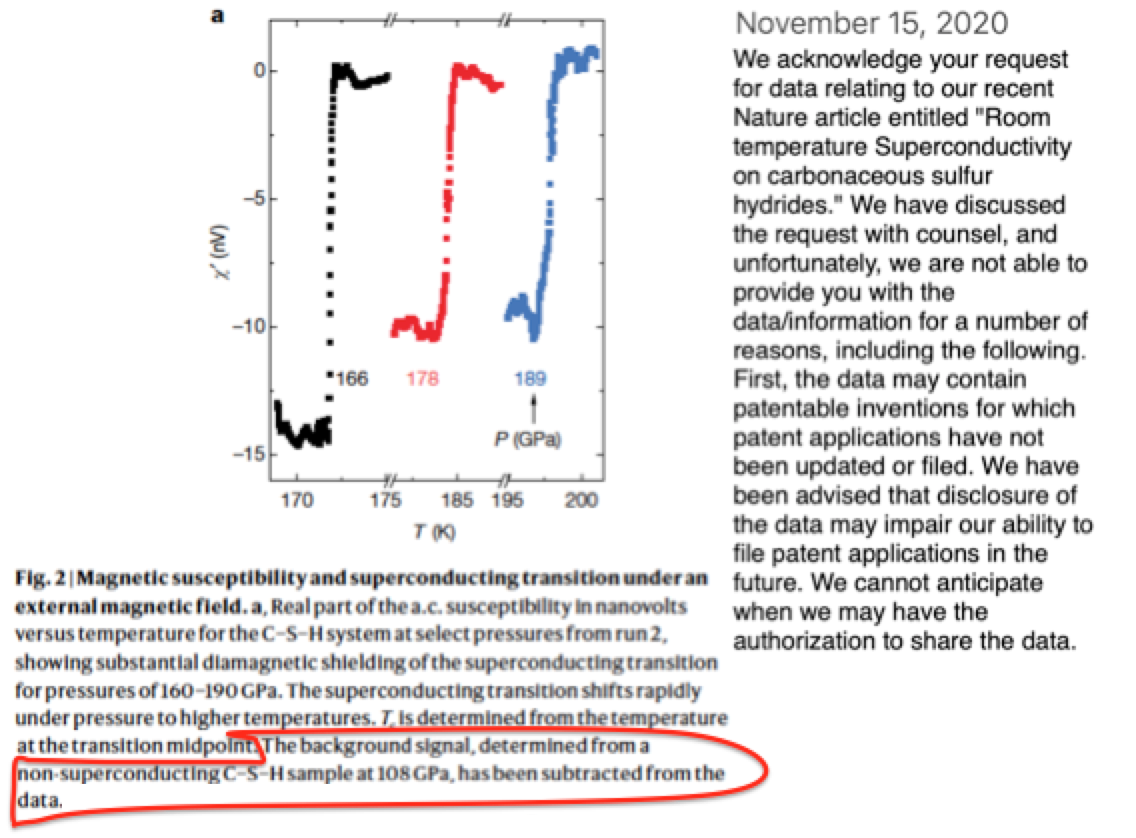 Return
Return
In Nature 586, 373 (2020), Snider et al announced the experimental discovery of room temperature superconductivity in a carbonaceous sulfur hydride under high pressure, hereafter called CSH. The paper reported sharp drops in the measured magnetic susceptibility as a function of temperature for five different pressures, that were claimed to be a superior test signaling a superconducting transition. Here I present several arguments indicating that the susceptibility data published in the paper were probably fraudulent. This calls into question the validity of the entire paper and its claim of detection of room temperature superconductivity. I also describe the roadblocks that I have encountered in reaching this conclusion. A variety of implications of this situation are discussed.